
7 Technology Trends for 2023 and 2024
31 August, 2023
Presenting a compendium of cutting-edge technology trends for the years 2023 and 2024. This comprehensive report delves
into:
- Artificial Intelligence (AI)
- Quantum Computing
- Robotics
- Cybersecurity
- And More
Unveiling the future, this report not only dissects these pivotal tech trends but also casts a glimpse into what lies
on the horizon in this ever-evolving domain.
AI Everywhere
AI's explosive growth and popularity in recent years have made it a standout innovation. Adoption has surged 2.5 times
since 2017, with around 50% of organizations embracing AI for business tasks. While enterprise adoption has stabilized,
AI is spreading across industries like finance, healthcare, and manufacturing.
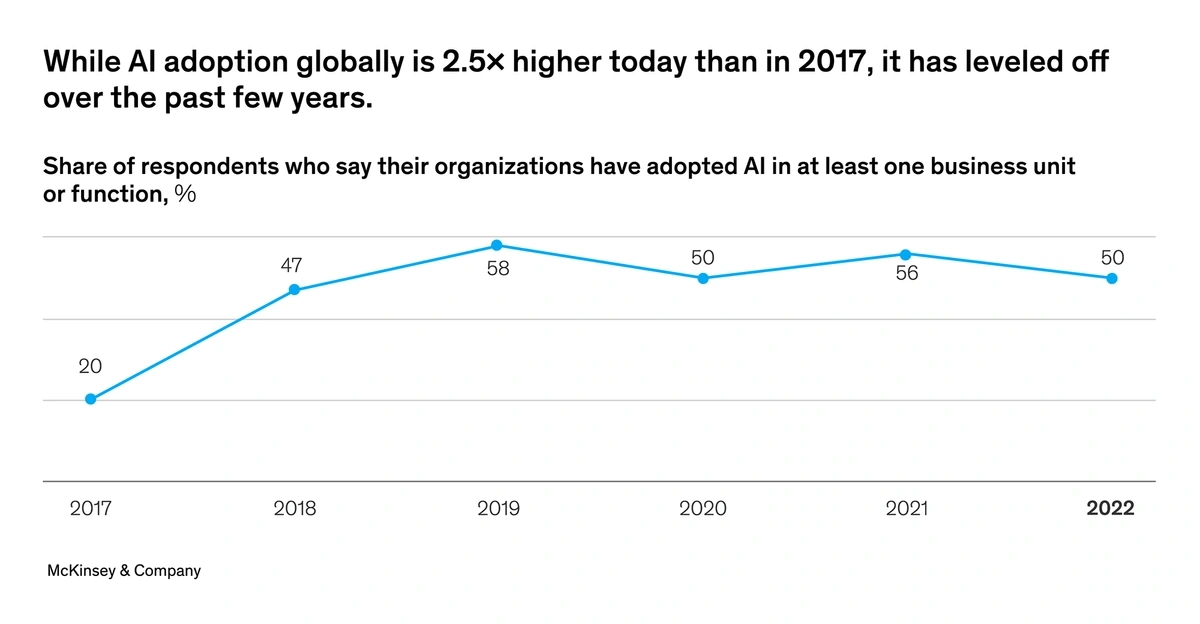
AI is no longer just for big players. Open-source AI solutions, lower costs, and simpler systems are democratizing
AI. For example, OpenAI, valued at $29 billion, expects $1 billion in revenue by 2024. Their ChatGPT, released in November
2022, amazed with natural-language interaction, engaging 100 million users in two months. Others, like Google and
Microsoft, followed suit with their AI chatbots.
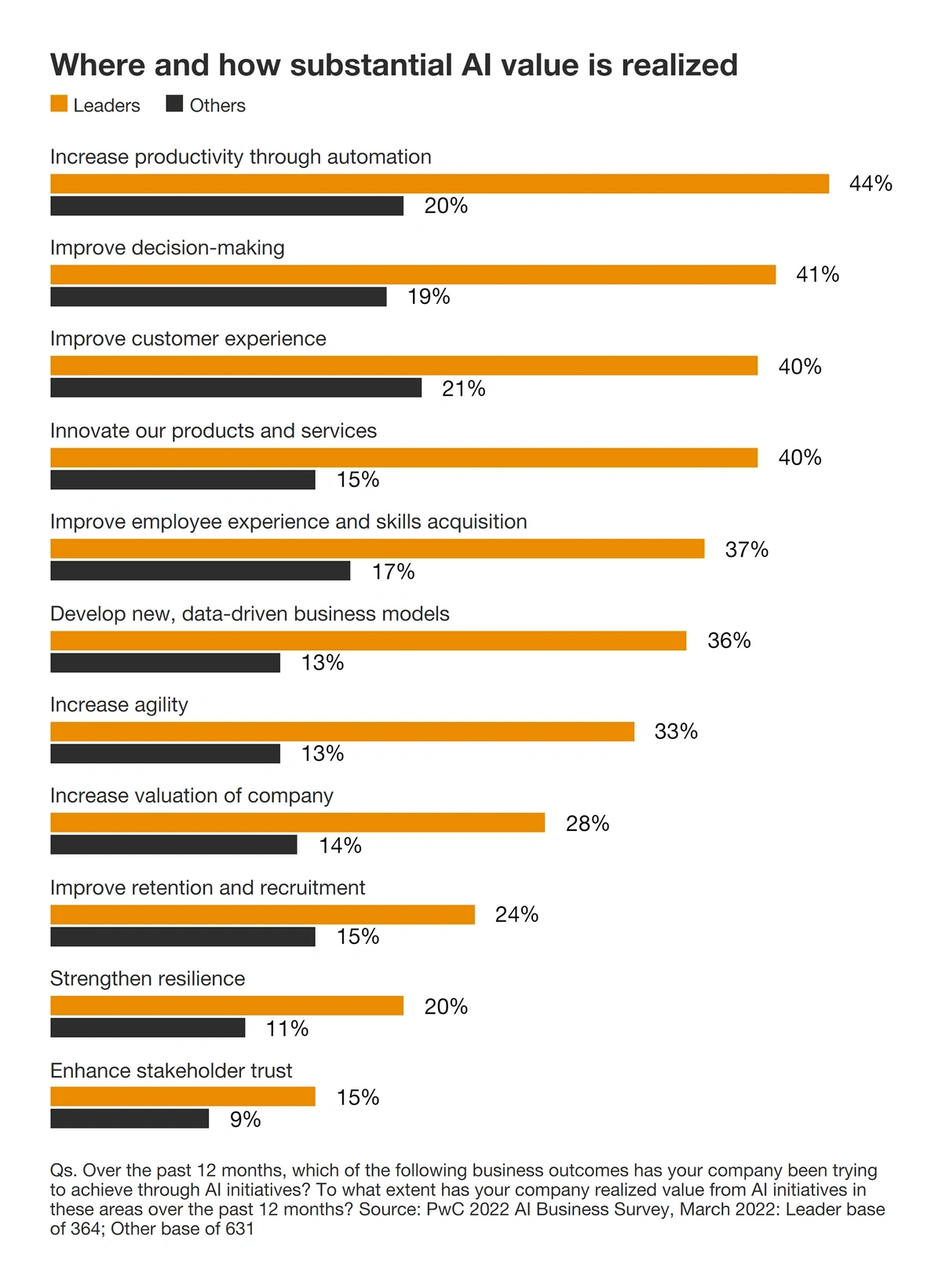
Even Meta is stepping into AI with its Large Language Model Meta AI for academia, government, and research. This tech
could revolutionize business: from rapid customer service and content creation to code writing and data analysis.
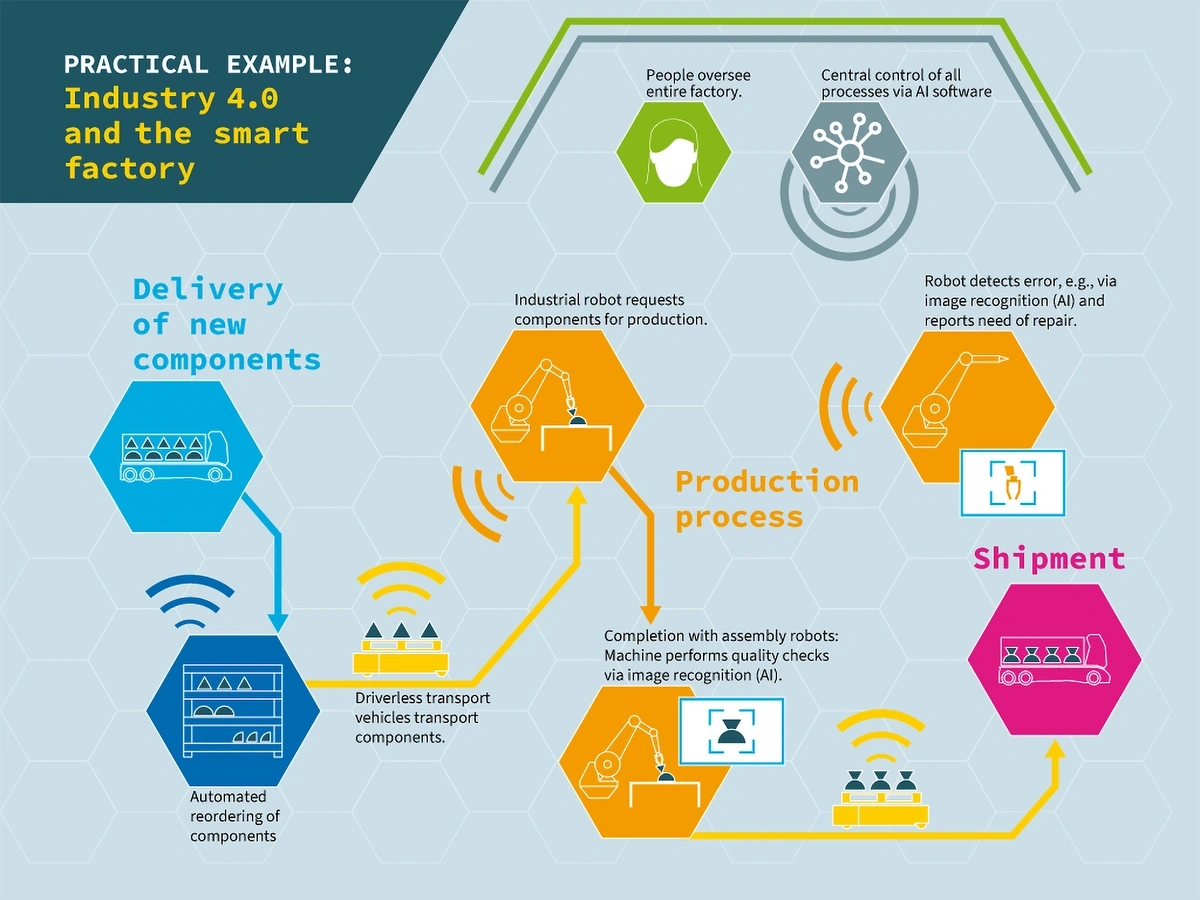
Companies embrace AI to enhance productivity, decisions, and customer experiences. Eleos Health exemplifies this with
an AI platform for therapists, automating sessions and interventions. Manufacturing and warehouses also benefit, automating
inventory and enabling smart factories for predictive maintenance and worker safety. AI's impact spans sectors, making
operations more efficient, and propelling us into an AI-augmented future.
Cleantech Advancements and Low Carbon Energy

An astonishing $1.1 trillion flowed into low-carbon energy transition in 2022, highlighting the surging momentum of global clean energy investment. This marked a 31% leap from 2021 and a pivotal milestone—the first time clean energy investments matched those in fossil fuels. Cleantech is reaping the rewards with over 25% of all venture capital now pouring into cleantech companies.
Anticipating further growth, 2023 holds promise, partly due to the Inflation Reduction Act. This law ushers in loans, grants, and tax incentives to stimulate private sector interest and financial commitment to cleantech. This act is projected to incubate between 300 and 1,000 new companies, many possibly in the green hydrogen sector.
Green hydrogen, produced through renewable energy, holds immense potential as a carbon-free energy source. The green hydrogen market's surge is evident, with search volume up by over 1,450% in the last five years. Projections paint a vibrant future, with a projected Compound Annual Growth Rate (CAGR) of 61% through 2027, culminating in a market value surpassing $7 billion.
Notably, the Hydrogen Council stipulates that around $700 billion in hydrogen-focused investments will be pivotal in achieving net-zero emissions by 2050. A striking increase in hydrogen projects—160 more compared to 2021—underscores the industry's growth trajectory. Around 10% of these projects have reached final investment decisions.
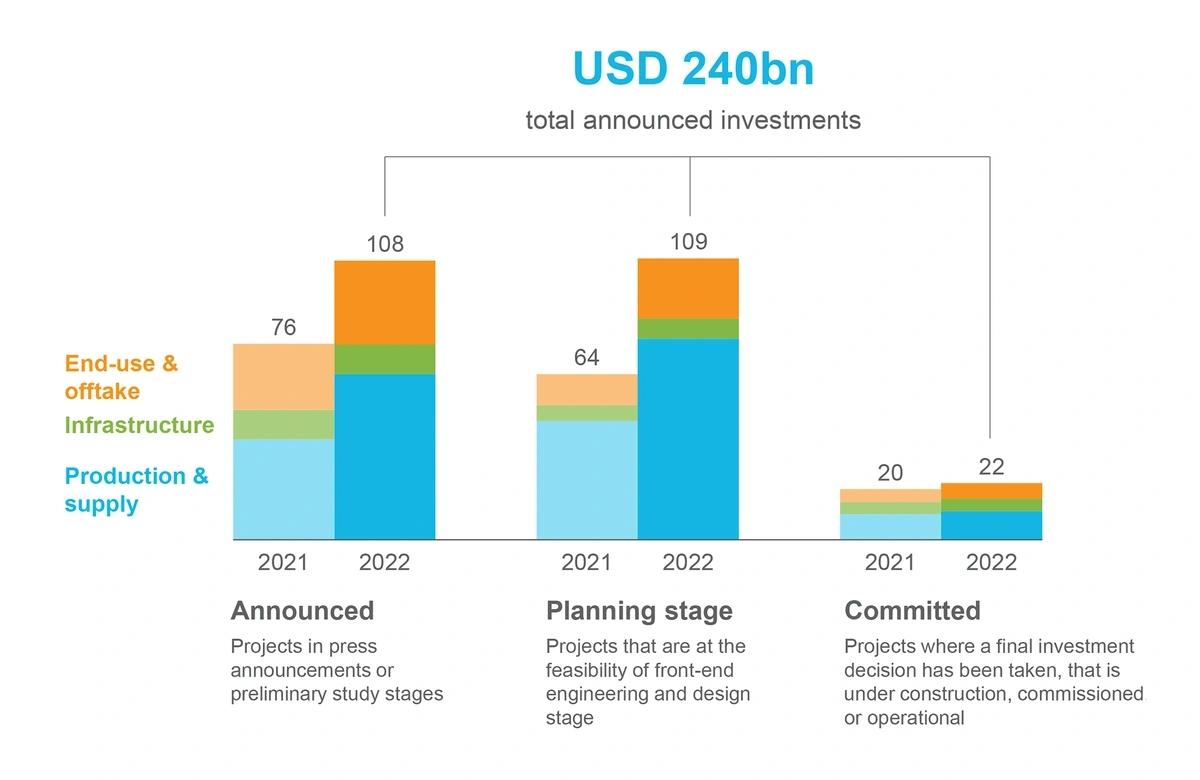
To confront the emissions head-on, cleantech leaders are harnessing carbon capture technology. This technique involves intercepting carbon molecules, which are otherwise released by power plants and industrial facilities, and isolating them. This process can effectively remove up to 90% of emissions. Funding for carbon capture technology surged, almost doubling in the first three quarters of 2022 compared to 2021. This advancement signifies a pivotal stride towards immediate emission reduction and potential reversal.
Progress in Early Disease Detection Tech
Amidst discussions of quantum computing and AI, the standout technology that promises the most profound impact on humanity is early disease detection. The timing of disease identification significantly influences patient survival rates. The potential for early intervention is exemplified by ovarian and melanoma cancers, where localized detection yields five-year survival rates of 93% and 99%, respectively. The advantage of early detection extends to all cancer types.
For instance, Biological Dynamics has developed a lab-on-a-chip test targeting pancreatic cancer biomarkers, with promising human trials underway. With $125 million raised, the company aims to extend its success to lung and ovarian cancer detection. By learning from years of lung scans, their tool adeptly predicts lung cancer up to six years in advance.
Beyond cancer, nanotechnology integrated into smartphone cameras is revolutionizing disease diagnostics. Nanotech facilitates phase imaging, an advanced cell visualization method, empowering patients to perform tests at home. Pending trials' success, patients could image their saliva or blood sample using their smartphone's camera and send it directly to medical providers for analysis.
Healthy.io's Minuteful Kidney test is a prime example. This at-home test measures the albumin-to-creatinine ratio (ACR) to diagnose chronic kidney disease. Patients receive a kit, use the Minuteful Kidney app for instructions, collect a urine sample, and image a test strip with their smartphone. AI and computer vision within the app assess albumin levels, providing almost immediate results. This exemplifies how tech is transforming early disease detection, potentially saving countless lives.
Quantum Computing Nears Practical Applications
The concept of quantum computing has intrigued since the 1980s, and in 2023, it's on the cusp of real-world applications. Unlike conventional binary code, quantum computers employ qubits that exist in dual states (both 0 and 1), accelerating computations significantly. Complex tasks taking millions of years for current computers can be resolved in minutes with quantum computing.
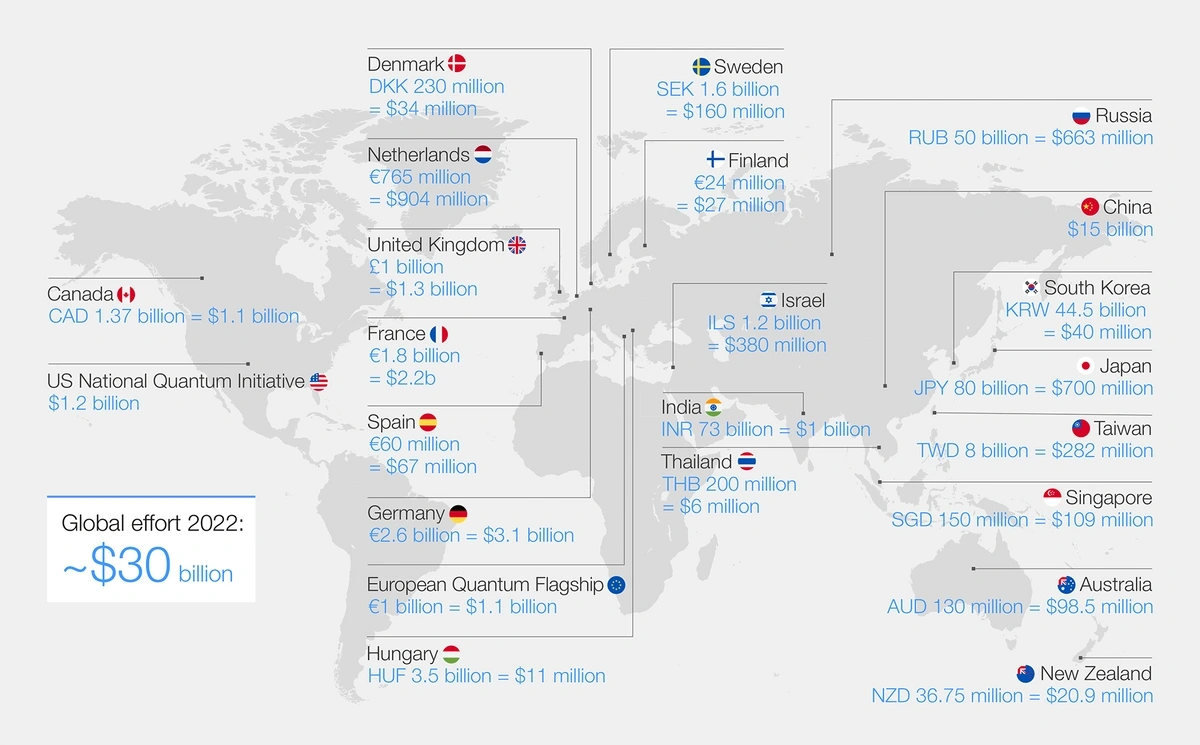
Despite past hurdles, recent momentum is evident, with a hefty $35.5 billion invested in 2022 across public and private sectors. IBM leads the quantum race, introducing Osprey with 433 qubits in November 2022. Their roadmap aims for a 4,000-qubit computer by 2025, while experts anticipate fully functional quantum computers requiring millions of qubits by 2027.
Alphabet's quantum computing division transformed into Sandbox AQ, securing substantial funding, while lesser-known contenders like Origin Quantum raised $148.2 million in 2022. Q-CTRL, Australia’s pioneering quantum tech company, addresses hardware challenges through quantum control infrastructure software. With 8,000+ users, including the U.S. government and IBM, they demonstrate the industry's transformative potential.
Quantum computing's impending impact spans industries. McKinsey's report emphasizes its greatest value in life sciences and finance, estimating up to $700 billion by 2035. In finance, quantum tech could slash market risks, enhance fraud detection, and expedite customer onboarding. Everyday scenarios could change too, like electric vehicle charging. Current home charging takes hours; quantum technology could shorten it to just three minutes at home and mere seconds at high-speed stations.
Rising Complexity of Cyber Threats
From ordinary individuals to government-sponsored campaigns, cybercrime's growth is relentless and concerning. In 2022, a Hiscox survey revealed that 43% of companies reported a cyber attack in 2021, escalating to 48% in 2022. Alarmingly, 20% of attacked organizations faced damage that jeopardized their financial stability. The booming cyber security industry is set to surge from $155 billion to $376 billion by 2029, mirroring the escalating threat landscape.
Deepfake attacks represent a sophisticated avenue for hackers. A VMware survey in 2022 indicated that 66% of IT leaders had encountered deepfake-related attacks in the past year, marking a 13% increase since 2021. Employing AI and deep learning, deepfake technology generates convincing fabricated content, growing more potent with time.
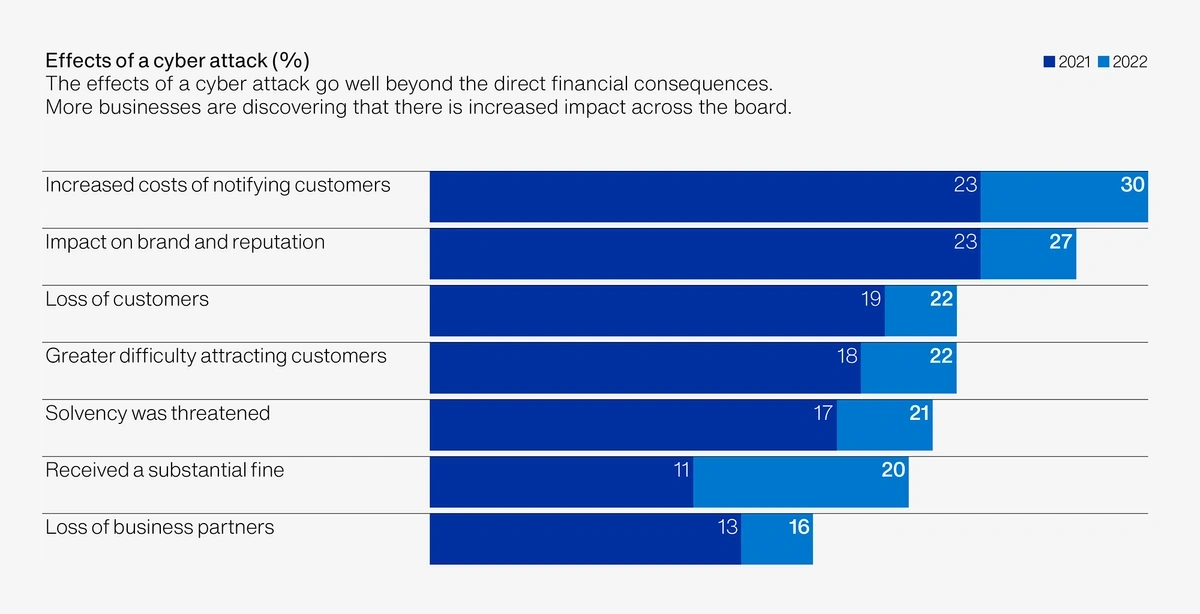
The evolution of generative adversarial networks renders detection of deepfakes near-impossible, especially with the facilitation of 5G networks for real-time manipulation. Cybercriminals exploit deepfakes in various ways, from BEC scams to bypassing face-to-face verifications.
Detecting threats poses a perpetual challenge for organizations, as security experts perpetually play catch-up. Yet, AI and advanced technologies are empowering early detection and intervention. IBM's 2022 report highlights that combining AI and automation shaves 74 days off breach lifecycle and saves $3 million compared to non-users.
Deep Instinct exemplifies this innovation, employing deep learning for cybersecurity. By scanning millions of files daily, it identifies threats within a mere 20 milliseconds, averting 99% of potential attacks. Since its inception in 2015, Deep Instinct has secured over $321 million in funding from prominent firms like BlackRock and Chrysalis Investments. This exemplifies the collaborative effort to counter the rising tide of cyber threats.
IoT's Expansive Reach in Enterprise and Public Spheres
Amid chip shortages, the global IoT connections are poised to surge to 27 billion by 2025. Leveraging the impetus of 5G networks and impending semiconductor manufacturing relief, the enterprise IoT market could burgeon to $483 billion by 2027. This sector is anticipated to exhibit a remarkable CAGR of nearly 20% through 2027.
Varied industries' leaders are embracing IoT to enhance connectivity and data collection. In fact, IEEE's 2022 survey heralded IoT among the top five impactful technologies of 2023. Notably, businesses are experiencing swift ROI, with over 60% achieving financial payback within a mere three years.
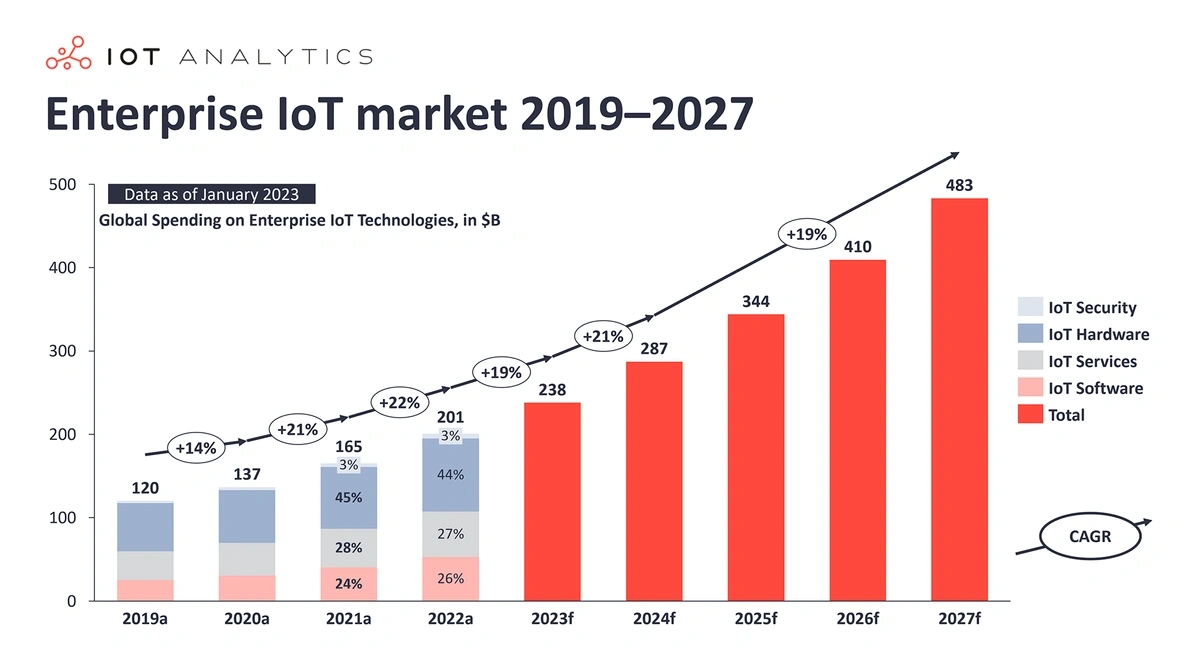
Manufacturing, termed the "industrial internet of things" (IIoT), is actively investing in IoT for smart factory realization. In the U.S., 35% of manufacturers are already harnessing IoT devices to collect and employ data. Sensors integrated into machinery amass data, wirelessly stored and scrutinized by machine learning platforms to optimize efficiency, curb waste, and predict maintenance requirements.
IoT's transformative effect extends to smart cities as well. Sensors gather data from electric meters, traffic signals, trash cans, and more, facilitating enhanced city efficiency and safety. A partnership between the University of Idaho and Nordsense exemplifies this; outfitting concrete trash cans with IoT sensors led to a 50% reduction in working hours and fuel consumption for waste management through real-time monitoring and alerts.
The Ascendance of Robotic Process Automation
In an environment where artificial intelligence and machine learning coalesce, businesses are actively intertwining automation into their operations. Among the burgeoning technologies, robotic process automation (RPA) stands out, garnering excitement from executives.
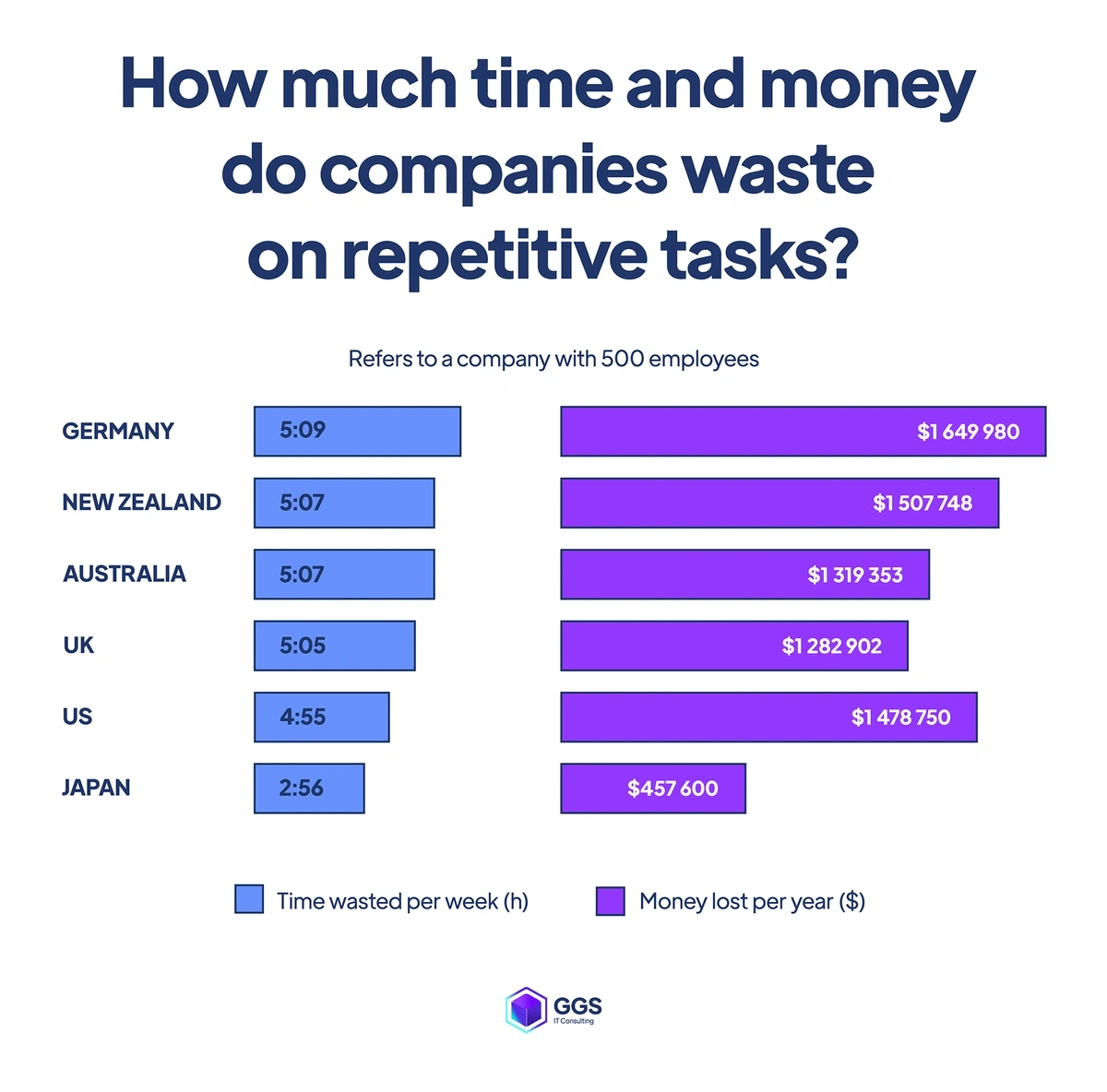
RPA entails training software to execute repetitive, mundane tasks. Predictions forecast an impressive growth trajectory for the RPA market, ballooning to $25 billion by 2030, underpinned by a robust Compound Annual Growth Rate (CAGR) of nearly 36%. Notably, RPA software spending escalated to approximately $3 billion in 2022, marking a significant 21% uptick from 2021.
Current surveys affirm that one-fifth of businesses are utilize RPA, with its adoption rooted in optimizing employee efficiency and productivity amid a constrained labor market. A compelling catalyst for RPA's integration is the evident realization that U.S. companies with 500 employees lose over $1.4 million annually due to productivity leakage from repetitive tasks.
Conclusion
In closing, our exploration of the top 7 technology trends currently shaping both enterprises and consumers draws to a conclusion.
These trends have unfolded against a backdrop of labor scarcities and chip shortages, introducing diverse challenges to global businesses over the past couple of years.
Nonetheless, the technology sector's resilience shines through as it grows and evolves to meet novel demands. With a dedicated focus on addressing contemporary issues and a seemingly boundless reserve of resources for successful ventures, the tech industry's momentum remains unwavering.
Anticipating the road ahead, the outlined technology trends are poised to wield substantial influence in shaping our collective future. As we move forward, the dynamic landscape of technology promises to chart exciting new trajectories.